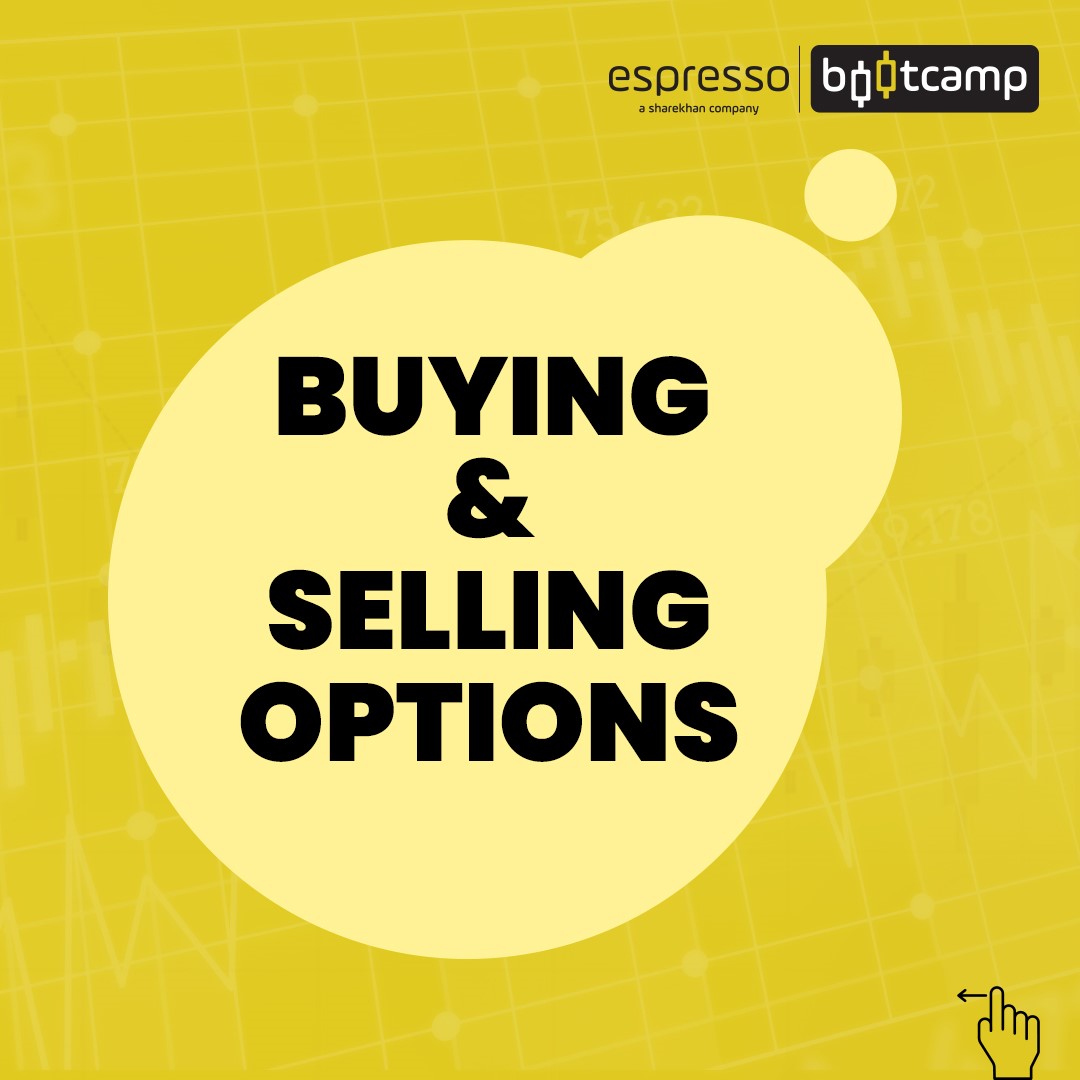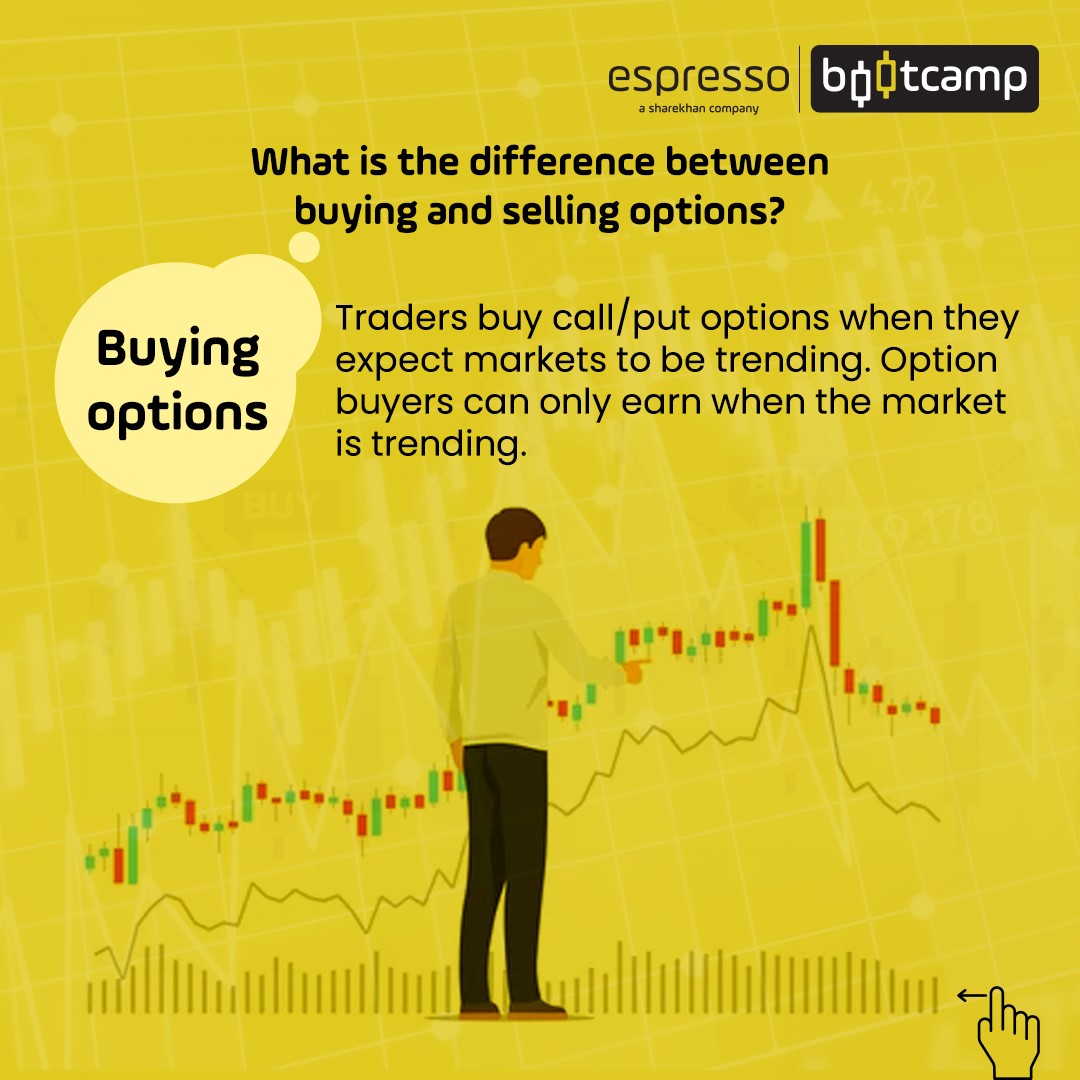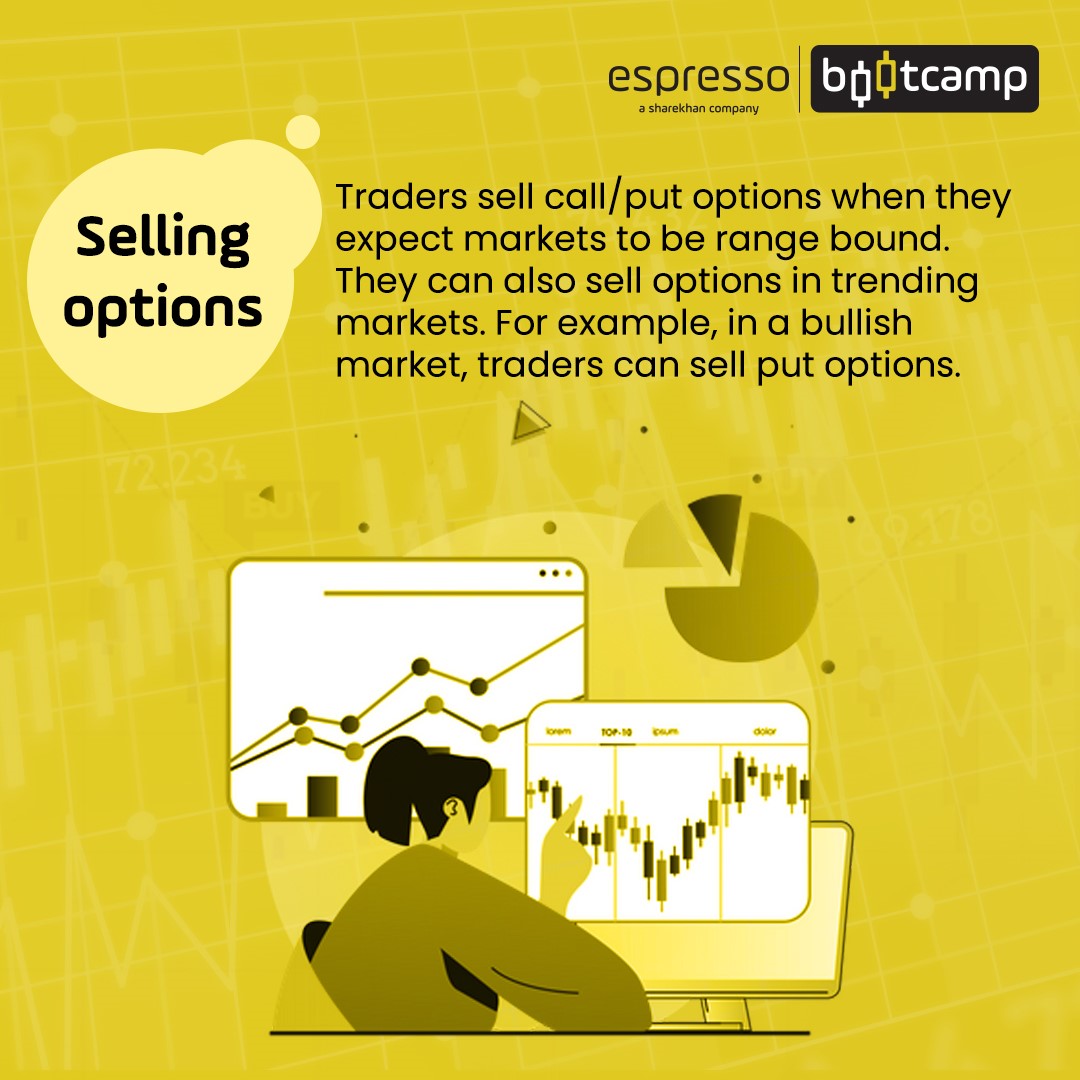Options contracts are instruments that are derived from underlying assets like stocks, bonds, currency pairs, commodities, etc. Options contracts confer the right, but not the responsibility, on the holder to purchase or dispose of an underlying asset at a price to be exercised at a future date.



Call and put options are the two forms of options that are commonly used. A call option holder receives the right but not the obligation to buy the underlying, while a put option holder receives the right but not the obligation to sell the underlying. You can buy and sell call and put options.
The risk and return profiles differ in option selling vs option buying. So what is buying vs selling options? An option buyer is a person who pays the premium to purchase an option to cover risk, while the option seller or the writer agrees to underwrite the risk. Here the buyer is an insured party who pays the premium, and the seller is the insurer who collects the premium and provides insurance.
The potential profit for option buyers and sellers is also different. An option buyer enjoys unlimited profits and limited losses, while an option seller has to do with limited profits and unlimited losses.
Leveraging with option buying
An option buyer can either be a long call option or a long put option. A long call option means the right to buy or exercise an option any time before expiry, while a long put means a right to sell or exercise an option any time before expiry.
The greatest advantage of option buying involves leverage. Leverage means paying a fraction of an amount to get a larger trading exposure. Buying of options position of, say, 100 shares is less expensive than buying 100 shares in the cash market. An investor would require a larger amount of money to buy shares than an options trader who can buy the rights of buying or selling the same number of shares. Also, option buying potentially can give larger returns or gains with limited risk. The risk is limited to the premium paid.
For example, a trading account has Rs 60,000 and a call option contract of a company you expect to go up in a short while of 1,000 shares is trading at Rs 20 and the stock is trading at Rs 800. If the stock has to be purchased, the cost would be Rs 8,00,000 (1,000 x Rs 800). But if a call option is to be purchased, then the cost would be Rs20,000 (1,000 x Rs 20). One can buy three thousand shares for Rs 60,000 and if the price of the option moves in favour even by Rs 10 then the profit would be Rs 30,000 (3,000 x 10).
The return on investment (ROI) would also be much better at 50 per cent (Rs 30,000 / Rs 60,000). The same example holds true if one has a view that the stock price would fall in a short while. In this case, a put option can be bought, and if the price of the option moves in favour, one can profit from the same, instead of selling an existing investment.
Shortcomings of option buying
Options have something known as time value. This means it loses its value as time elapses. It has a fixed expiration, and therefore, the value decays as the expiration date nears. Not all stocks have options, and therefore, the opportunity to trade, hedge or lock in profits in certain stocks is not possible. Even in the available options at times, liquidity is thin, resulting in higher impact costs.
Earning money upfront with option selling
Option selling involves earning upfront money by collecting option premiums from buyers. One can short a call option or a put option and collect premiums and keep it if the options expire worthlessly. Option selling is a deep-pocket game as compared to option buying. This is so because option selling requires a larger margin to trade.
Selling options is risky and the return is also limited. Option selling involves an obligation; therefore, if a call option is exercised, the option seller or the writer, as he is known, will be under a contractual obligation to give delivery of the shares. On the other hand, if a put option is sold and exercised, the writer will have to ensure that he takes delivery of the shares. Selling of options is basically of two types — selling covered options or selling naked options.
Selling calls
Selling covered calls involve selling call options for investments already owned to earn income on the portfolio. A covered call is usually undertaken if the stock is not expected to move up during the expiry of the option. On the other hand, naked calls are sold where the investor does not own that stock to give delivery by buying in the open market in case it is exercised by the buyer. A covered call is less risky than naked calls as one already has the delivery of the stock and need not buy from the market. Uncovered call selling involves unlimited risk.
Selling puts
Selling covered puts involves the simultaneous selling of stock and a put option. In this, the view is bearish and the stock price is expected to go down. On the other hand, naked puts are sold without having created a simultaneous short position. Selling naked puts is risky since if the put option is exercised, there wouldn’t be enough capital to take delivery of shares.
Conclusion
Option selling is a riskier game than options buying. While option buying needs less capital, option selling needs deep pockets as margins are involved. Also, the return on option selling is much less than that enjoyed by options buyers. Option selling, by nature, is an income-generating strategy, while option buying is a profit-generating strategy.
Things to remember
- The two forms of options commonly used are – Call options and Put options.
- A call option holder receives the right but not the obligation to buy the underlying, while a put option holder receives the right but not the obligation to sell the underlying.
- One can buy and sell call and put options.
- An option buyer pays the premium to purchase an option to cover a risk. An option seller or writer agrees to underwrite the risk.
- The greatest advantage of option buying involves leverage at a far lower price than if one were to buy the underlying stock.
- The greatest disadvantage is that options lose value as time elapses.
- Option selling is riskier than options buying.
 0
|
0
|
 0
0
 Modules
Modules

 Watch
Watch 
